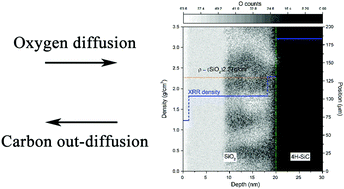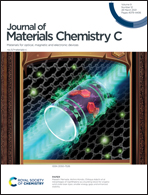Effect of oxidation temperature on the inhomogeneity of chemical composition and density in nanometric SiO2 films grown on 4H-SiC
Abstract
State-of-the-art secondary ion mass spectrometry (SIMS), X-ray reflectivity (XRR) and atomic force microscopy (AFM) have been used to determine the effect of oxidation temperature on the inhomogeneity of chemical composition and density in nanometric SiO2 films grown on n-type 4H-SiC by thermal oxidation in dry oxygen. Within the films grown at 1000–1100 °C with thicknesses of 7.6–21.1 nm, we have revealed three regions with various distributions of the Si, O and C concentrations: the transition region, adjacent to the substrate surface, where the O concentration steeply rises and the Si and C concentrations go down, the middle region, where the O, Si and C concentrations are nearly constant, and the near-surface region, adjacent to the outer surface of the oxide film, where the O concentration increases towards the surface. Based on the images of the two-dimensional distributions of the O and C concentrations and the density profiles in the oxide films, we postulate that in the transition and middle regions the density depends on the ratio of the volume of SiOxCy and SiO2 phases. In the near-surface regions, the density is mainly determined by SiO2 porosity.



 Please wait while we load your content...
Please wait while we load your content...